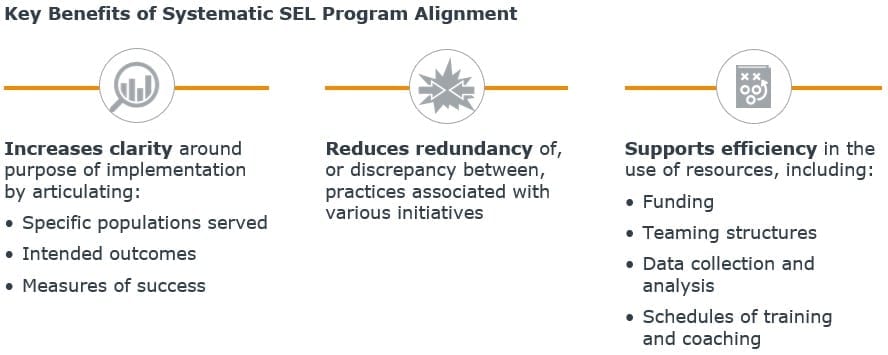Over the past few decades multiple approaches, frameworks, and practices have been developed to help districts manage disruptive behavior and support students’ long-term social-emotional competency and well-being. But as districts have experienced a rise in the frequency and intensity of disruptive student behavior, many have responded with a “more is better” approach, adopting a number of different programs and practices haphazardly or all at once, overlooking one districtwide social-emotional learning strategy.
Practices that are usually effective—such as implementing Positive Behavioral Interventions and Supports (PBIS), adopting a social-emotional learning curriculum, or becoming a trauma-informed school system—may ultimately fail to deliver expected results due to:
- Insufficient accountability: initiatives are started without a clear district mandate, ownership, or a measure of success making efforts hard to expand, adapt, or sustain
- Inconsistent implementation: districts let schools choose which initiatives to implement and how, leading to wide variation in outcomes from school to school
- Lack of fidelity: staff skepticism of the latest initiative leads to unwillingness to adopt practices and ultimately erodes implementation
Although well-intentioned, districts end up creating a disconnected system of partially implemented practices, and often struggle to ensure successful implementation and sustainability of these initiatives.
Improving adoption by aligning resources
Districts must integrate disparate programs into an overall framework for how staff interact with students, identify needs, utilize resources, and provide services and supports. Strategically aligning all of the initiatives related to social-emotional learning is critical to maximizing staff buy-in and increasing the long-term sustainability of all efforts.

Use these additional tools to assess the SEL initiatives in place across your district. First, use the discussion guide to focus your leadership team on the district’s main goals and priorities for students’ social, emotional, and behavioral development. Then, use the alignment template and discussion guide to systematically review the programs and practices in place to identify opportunities to increase efficiency or close gaps in implementation support.
Pair this exercise with EAB’s “Managing Behavioral Disruptions in Early Grades Audit” to help you improve your district’s strategy for managing behavioral disruptions and advancing social-emotional learning in the early grades. The questions in this diagnostic will help you assess your district’s current capabilities according to four key areas of opportunity to address students’ needs proactively and provide them with more effective support.


